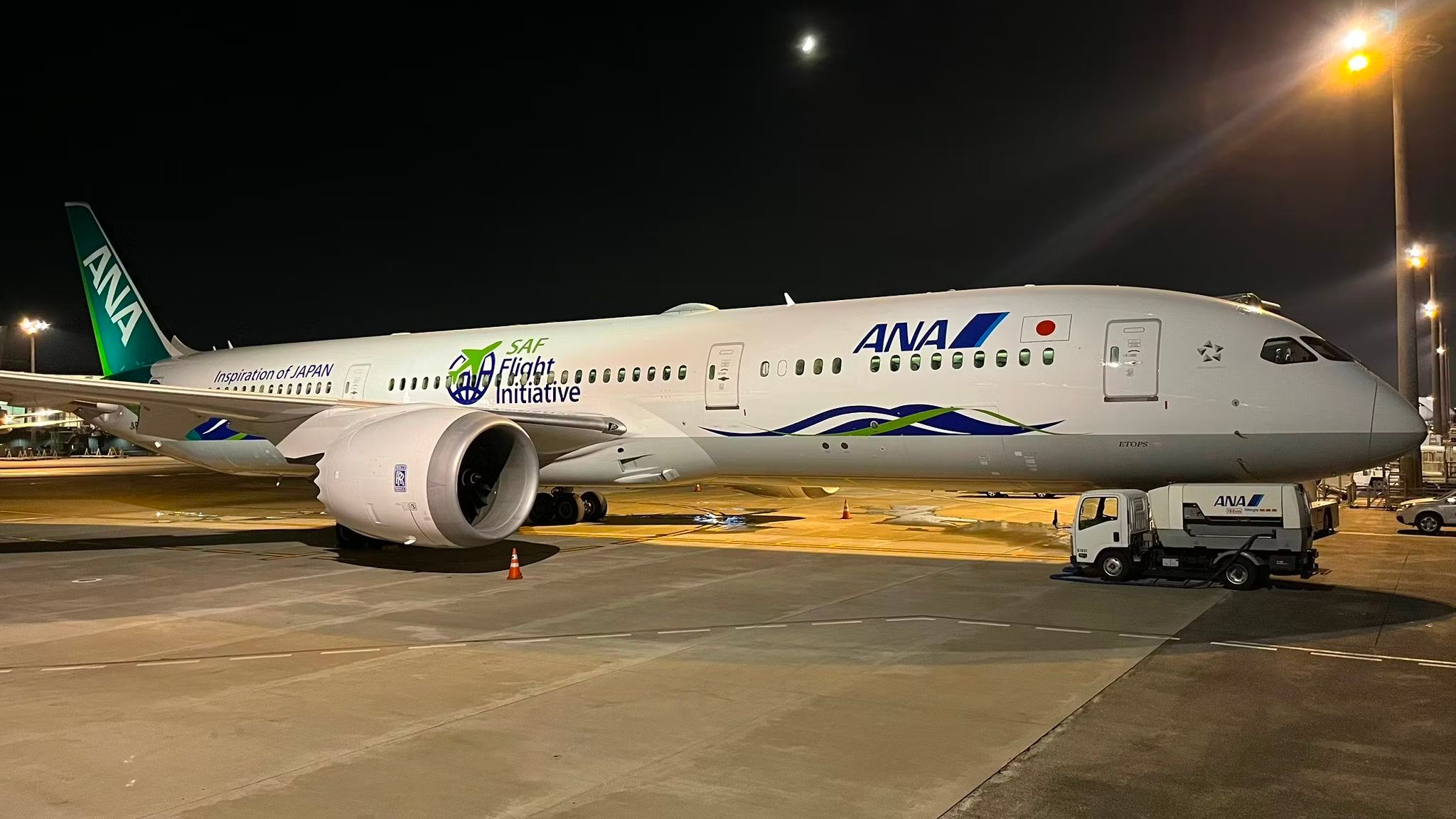Summary
- All Nippon Airways will introduce the DHC8-Q400 with a sustainability-themed livery to raise awareness of its environmental strategy.
- The aircraft will implement sustainability measures, such as using recycled materials and reducing CO2 emissions.
- ANA is collaborating with local companies to develop innovative solutions, such as using apple waste to make vegan leather headrest covers.
Last week, Japan’s All Nippon Airways released details of its next Future Promise aircraft, a De Havilland Dash 8-Q400 that will take to the skies later this month. The turboprop will carry the distinctive sustainability-themed livery that features on the Boeing 787 Future Promise Jets already in service.
Watch out for the new livery
All Nippon Airways (ANA) will introduce the DHC8-Q400, also known as The Future Promise Prop, on domestic routes from October 23, 2023. ANA uses the special livery to raise awareness of its broader sustainability and environmental strategy as part of its ANA Future Promise (AFP) Initiative, which was introduced in 2021.
Image: ANA
The AFP initiative encompasses the group’s commitment to and activities across its environmental, social responsibility and governance (ESG) areas. Senior Vice President Customer Experience Management and Planning Junko Yazawa said:
“ANA is committed to accomplishing its sustainability goals and be a leader in the aviation industry, and the ANA Future Promise Jet and Prop symbolizes our ongoing efforts. As we remain committed to our emissions reduction goals, we will continue to identify and invest in industry-leading sustainability practices and innovations to advance our mission.”
ANA said that apart from the themed livery, the 2012 Dash 8-Q400, registration JA461A and MSN4430, will implement a variety of sustainability measures, including the use of in-flight service items made from environmentally friendly recycled materials and flight operations aimed at reducing CO2 emissions. Subject to customer feedback and feasibility, those measures will be used on other aircraft and routes to promote the airline’s medium-term management strategy.
Recycling scallop shells and apple peels
The aircraft is fitted with a riblet-treated film to give it a “shark skin effect,” much like the Lufthansa Technik AeroSHARK film applied to Lufthansa Cargo Boeing 777Fs. The aim is to disrupt airflow and reduce drag, leading to reduced emissions, and the ANA aversion has been produced in a technical cooperation with Nikon Corporation. ANA said it will verify the reduction in air resistance, durability and CO2 emissions reduction over time.
Photo: All Nippon Airways
Most airlines have already moved to limit or remove single-use plastics, but ANA is applying that principle to the humble onboard safety card. The Future Turboprop will be equipped with safety cards made from Karastic, a material produced from recycled scallop shells.
ANA is working with Koushi Chemical Industry, a manufacturer involved in utilizing waste materials, to reuse scallop seashells from Sarufutsu Village in Hokkaido. Taking this regional approach, the project will not only reduce waste and the use of plastic but also contribute to regional revitalization and economic development.
Perhaps even more unusual than shark riblets and scallop shell safety cards is using apples to make vegan leather headrest covers on the Future Promise Turboprop. Aomori Prefecture in Japan is home to the nation’s finest apples, and a company called appcycle uses the residue and discarded peels from the juice-making process to produce vegan leather that finds its way onto ANA aircraft as headrest covers.
The airline points to this as another project where its sustainability and social responsibility goals unite to support local economies. Appcycle was established in Aomori City in 2022 and developed the RINGO-TEX synthetic leather used in the headrest covers to solve the issue of apple waste and support sustainable development goals.
Have you flown on the All Nippon Airways Future Promise 787? Let us know in the comments.




